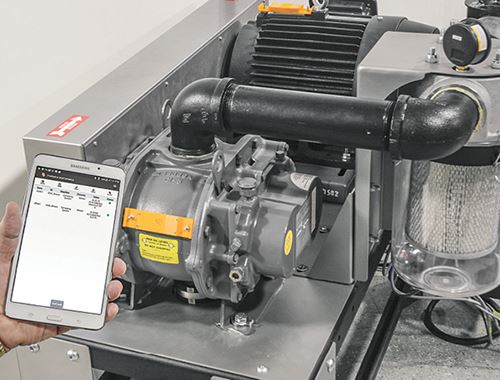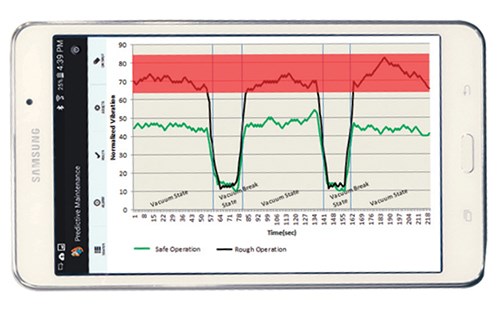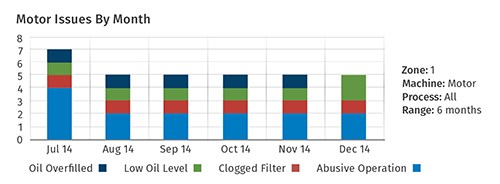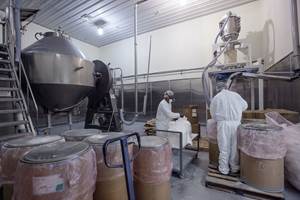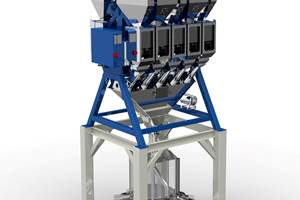Detect When Equipment Needs Maintenance—Before It’s Too Late
New technology to debut next month at NPE warns when preventive maintenance is needed, before equipment failure disrupts production.
Is the “run-to-fail” era of operating plastics processing machinery until it drops dead about to come to an end? It will be if a startup company specializing in “smart” predictive-maintenance sensors and a cloud-connected mobile app has its way.
NPE2015 next month in Orlando, Fla., will mark the coming out of Prophecy Sensorlytics, a Columbia, Md., company launched last year following the purchase of sensor specialists Zreyes Technology, also of Columbia. Prophecy offers patented machine-mountable (using magnets or screws) sensors made out of a single silicon chip, as well as a patented wireless sensor network, a cloud-based distributed data-management system, and analytics that monitor a variety of machine signals to help predict incipient failure and alert users when maintenance is needed or should be scheduled.
Data from these sensors is uploaded to a cloud server or to the processor’s own intranet, where trends can be viewed and analyzed from anywhere in real time on smart devices equipped with the mobile app, and over the internet via PC, etc.
“We have developed a complete and cost-effective platform to bring the new era of the ‘internet of things’ to mid-sized manufacturers, which traditionally can’t afford expensive sensors and sensor networks, for predicting machine failures and getting the initial trend of a fatigued machine to mobile apps,” explains Dr. Biplab Pal, cofounder and chief technology officer of Prophecy Sensorlytics.
“Most machines indicate pending failure in the form of rising or falling surface temperature, pressure, flow, vibration, sound, power factor, and so forth. Our machine-‘wearable’ sensors can be placed on old and new machines to track their gradual failure so that a complete disruption of production can be avoided by scheduled maintenance—knowing exactly where and when the machine is going to fail or cause trouble.”
The technology is available through a licensing arrangement. Prophecy’s first licensee is Novatec Inc., Baltimore, which has exclusive rights to the technology on drying, conveying, and downstream extrusion systems. At NPE, Novatec will display what it is calling “Prophecized” pumps used in materials conveying, and officials from Prophecy Sensorlytics will be on hand in Novatec’s booth. “We feel once we expose processors to this technology, they’ll realize they can’t live without it,” states Conrad Bessemer, Novatec’s president and CEO.
Novatec systems will include the predictive-maintenance technology at no extra cost, Bessemer says. “Our objective in equipping systems with this technology is to prevent machinery breakdowns and failure,” he states. “With open-source data and cloud-based computing, it’s much less expensive to store and access information for trending on what actually is going on inside machinery. There’s nothing new about sensors. But until now they’ve been expensive and ‘dumb’ from the standpoint that they cannot communicate.
“There is also nothing new about ‘wearables,’” Bessemer adds. “Consumers have for years been wearing watches and other devices that monitor their temperature, heart rate, and so forth. What we’re doing is helping bring this technology into an industrial environment where ‘run-to-fail’ is too often the norm.”
HOW IT WORKS
In the system developed by Prophecy Sensorlytics, data from these machine-mounted devices is uploaded via a local wireless network created by radio-frequency connected sensors. Using proprietary software, this data is then trended and analyzed to indicate if preventive maintenance is needed.
The system will also send maintenance alarms to personnel in the form of emails and text messages. The data is visualized graphically, and classified to identify a particular maintenance problem so that personnel can quickly learn about it; any data point shown in red, for example, warrants immediate attention. By clicking on a red alarm, more detailed analysis logs are available on possible causes of the problem so that maintenance personnel don’t have to waste time figuring out what’s wrong. Moreover, any new failure can be logged in as fresh data, which helps the system identify trends and patterns to enable it to continuously “learn” when a machine is properly functioning, and when it isn’t.
States Dr. Pal, “Supervised learning for predictive maintenance on our platform is extremely sensitive to changing machine conditions triggered by a bad motor, clogged filter and pipes, etc. Most of it is delivered via a combination of machine-learning algorithms based on sound, vibration, and temperature data from the machine.
“Today the most common way to alert plant personnel of possible machine failure is through an alarm system of sensors inserted inside the equipment,” adds Dr. Pal. “However, in most manufacturing plants, the alarms are visual and available at machines usually located in noisy and dusty environments. In some advanced systems, alarms are transmitted via an industrial bus network and are available from the internet or a mobile app, but such systems are beyond the reach of the most of mid-sized manufacturing operations due to high cost of sensors and data-acquisition systems. But even the most advanced system does not use predictive analysis of data involving multi-sensors and their historical behavior to predict and track continuous machine failure.”
Nowadays, Dr. Pal notes that if a dryer filter is clogged with a lot of dirt, a differential-pressure gauge will typically send a local alarm. “Unfortunately, because such machines are located in noisy and dusty industrial locations, in most cases nobody acts on the alarm,” he adds. “However, the system we developed tracks temperature of airflow and the surface of the dryer, which is extremely sensitive to changing filter conditions of the blower. Even a slight change in dirt condition in filter is detected with high and repeatable precision, and its effect on drying is captured in our mobile app visually.”
Motors on pumps and other devices are tracked mostly from the vibration, rumbling noise, and bad power factor they produce when the core starts to fail due to abusive operation, low pump oil level, etc. “All machines have a temperature, vibrate, and emit sounds,” states Dr. Pal. “Pumps are typically the core of any industrial system. They have a pulse. They have a pressure. They make sounds that can be analyzed. No different than the human heart. In many plants, signs that suggest maintenance is needed are ignored until the pump fails.”
Dr. Pal continues: “Sound analysis of human hearts can diagnose the 23 most common heart diseases. That is well understood, and we have learned from these studies. Machine sounds are easier to analyze since machines of a particular model will not show the level of variation that can be found in a human heart.”
WIDE RANGE OF OTHER APPLICATIONS
While Novatec has exclusive rights to Prophecy on its systems, the technology can be used on virtually any other type of equipment. On injection molding machines, for example, it could be applied not only to pumps, drives, and motors, it could conceivably be deployed to ensure platen parallelism as well.
With extruders, Prophecy technology can, for instance, be used on gearboxes to monitor oil pressure and vibration, as well as motor temperature. “We are also looking at ways in the future to use vibration to measure changes in screw/barrel wear,” states Dr. Pal. “Ultimately Prophecy Sensorlytics will look to work with extruder and molding OEMs who have their own sense of things to be monitored. Other markets that we are working on in the future include motors and the like for chillers, etc.”
States Dr. Pal, “The vision of Prophecy Sensorlytics is to bring a ‘3P’ maintenance mode to small- and mid-size manufacturers: Equipment will be predictive in that it provides an early warning before failure; preventive in that it indicates when a machine is being abused; and prescriptive in that it compares historical data looking for solutions.”
Related Content
Cut Loading Time Through Direct Charge Blending
Direct charge blender loading, a vacuum-powered automation process, can dramatically improve loading time and reduce material costs. In this article, we address ten common questions to help you determine if the systems are right for your facility.
Read MoreAutomated Resin Management and Blending System for Tight Spaces
NPE2024: Designed for new and existing operations with up to 10 machines and limited available space.
Read MoreHow to Effectively Reduce Costs with Smart Auxiliaries Technology
As drying, blending and conveying technologies grow more sophisticated, they offer processors great opportunities to reduce cost through better energy efficiency, smaller equipment footprints, reduced scrap and quicker changeovers. Increased throughput and better utilization of primary processing equipment and manpower are the results.
Read MoreAutomated Resin Management and Blending System
NPE 2024: Ampacet Liad’ Smart BlendSave Compact uses patented weighing and blending technology to manage increasing number of resin and PCR materials.
Read MoreRead Next
Lead the Conversation, Change the Conversation
Coverage of single-use plastics can be both misleading and demoralizing. Here are 10 tips for changing the perception of the plastics industry at your company and in your community.
Read MoreBeyond Prototypes: 8 Ways the Plastics Industry Is Using 3D Printing
Plastics processors are finding applications for 3D printing around the plant and across the supply chain. Here are 8 examples to look for at NPE2024.
Read MoreFor PLASTICS' CEO Seaholm, NPE to Shine Light on Sustainability Successes
With advocacy, communication and sustainability as three main pillars, Seaholm leads a trade association to NPE that ‘is more active today than we have ever been.’
Read More

